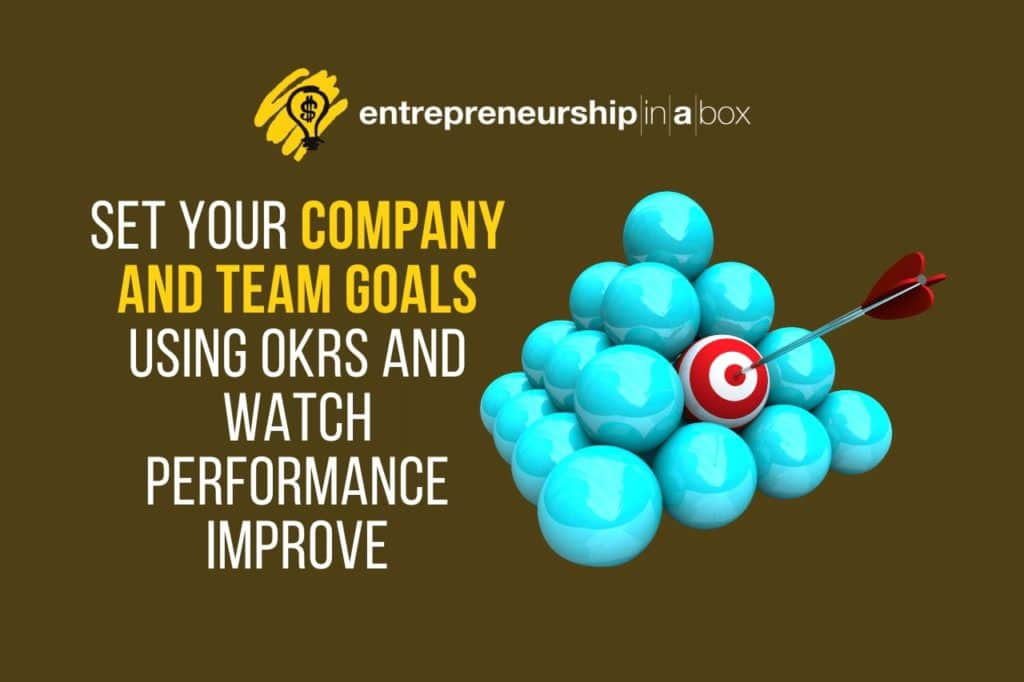Company and team goal setting is going through a revolution at the moment. Annual budgetary-based goal setting that is passed down from management to teams is being replaced by more focused, agile, and inclusive ways of setting goals. The framework that’s leading the movement towards a more goal focused, autonomous and agile workforce is Objectives and Key Results or OKR for short.
OKRs can be traced back to the 1970s, but really took off when a then small company called Google used them just over 20 years ago. To this day, it’s OKRs that guide Google’s teams towards achieving the things that will help them achieve their bold mission to ‘organize the world’s information and make it universally accessible and useful’. Now most fast-growing companies that want to involve their employees in working out how best to deliver the mission and strategy use OKR.
How to write OKRs
OKRs start with an Objective. A good objective is positive, motivational and perhaps even inspiring. For example, an annual Company Objective might be:
Provide an amazing customer experience at every touchpoint
Key Results are created by discussion about how you would measure that. The ‘as measured by’ component of an OKR.
Because looking to define a measurable and desirable outcome, you’re probably going to be using a metric, and setting a target value to be achieved by the end of a quarter.
In the example above your Key Results might be:
- Increase our NPS from 70 to 90
- Grow our revenue from $5m to $10m
- Improve our Customer Retention from 80% to 90%
How this will be achieved is by empowering teams to align their quarterly goals with it, or even creating teams specifically for goals. These are sometimes called ‘squads’.
In the above example, Sales and marketing would start creating OKRs that target revenue growth, Customer Service would target retention and NPS, and Product and Engineering teams would be aligned with the whole OKR.
The OKRs they create are meant to be outside their business-as-usual activities, and describe the goals that would have the biggest impact over the coming quarter. To be clear, they are not trying to codify everything they are doing as OKRs. Goal clarity comes from having fewer goals and a hyper-focus on the goals that matter.
After long debates, Customer Service might say that to increase retention they should create a new way of being alerted to customers that are not getting value from their product. So they create an OKR called:
Be warning of issues and proactively solve them
They propose to set ambitious Key Results to:
- Accurately red flag customers that are not happy 100% of the time
- Talk to 90% of red-flagged accounts
- Solve 80% solve issues flagged
These Key Results use metrics that are not currently tracked: Red flag accuracy, Red flagged account discussion % and Red flag resolution rate. These are the KPIs the team will now start tracking, and when they become ‘healthy’ or ‘good enough’, they can stop being a focus.
Initiatives are activities the team proposes to do to deliver measurable outcomes. The team has created these Initiatives:
- Implement product analytics to flag low usage accounts
- Create customer contact sequences to create discussions
- Create process to share issues with product management
- Create process to share resolutions with customers and establish active product usage
Everyone now knows what the biggest priority is in the coming quarter and how success is being measured. This sits alongside a range of KPIs or Health Metrics they track, and everyday processes they follow, and jobs they do – the business-as-usual.
Make it safe to fail
A key part of using OKRs is making it safe to set ambitious targets because ambitious targets help teams to achieve way more.
A rule of thumb is that with hard to achieve goals, 70% should be a success and 100% would be amazing. This means that missing the mark needs to also be safe. If employees fear punishment they will default to setting easier targets. This is not what you want.
Set fewer OKRs
There’s a direct correlation between the number of goals you set and the number of goals you achieve. The more goals we have the more we dilute or focus and energy. A key part of the OKR planning process is to work out which goals will have the highest impact. You then focus on those. It should always be obvious what you need to be working on and towards.
Checkin Weekly
Setting and forgetting OKRs is a terrible idea. That’s what old-school companies and teams do. OKRs put weekly meetings in the diary. These meetings are where progress and plans for the week ahead are discussed and any problems resolved.
This commitment to the weekly cadence and the quarterly planning cycle is how agile goal setting and execution works, and it will pay off.
📝 Author
Matt Roberts is the founder of goal-setting software ZOKRI. A tool to set and track OKRs, run check-ins, and stay agile.



